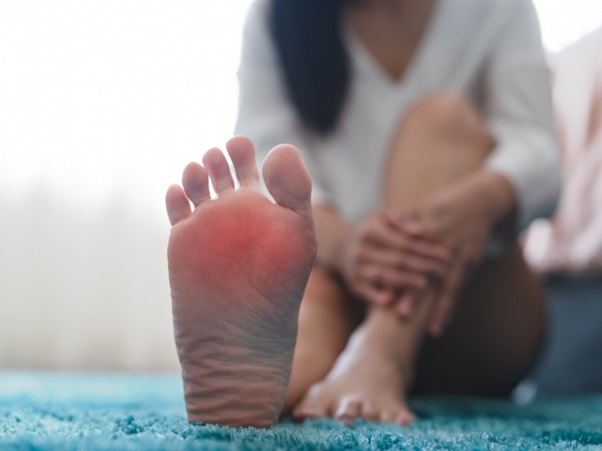Following a foot or bunion surgery in Singapore, an exercise programme will assist you in returning to daily activities and regaining the strength and flexibility you had before the injury. And you must adhere to a well-structured conditioning programme to ensure that your foot or ankle heals entirely and does not re-injure itself.
The guidance of a healthcare professional or ankle doctor in Singapore can ensure the safety and efficacy of the rehabilitation programme. And if you’ve had surgery on your foot or ankle, this step is critical.
Recovery from foot surgery can be a challenging process. Pain and swelling are common side effects, and each surgical procedure presents challenges. With this in mind, the greatest likelihood of returning to normal activities is attainable by focusing on regaining flexibility and strength. Try these at-home exercises to aid your rehabilitation after your gruelling foot surgery and after consulting with your foot and ankle specialist in Singapore to ensure that they are appropriate for your situation.
1. Theraband exercise.
Instructions for carrying out: Attach one end of the band to a stationary object, such as a table leg, and loop the opposite end around your foot. Pulling against the band’s resistance, inwardly rotate your foot. Move the band’s loop to the opposite side of your foot. Move your foot to the outside. Attempt to perform at least 20 repetitions twice per day.
2. Ankle pump.
Ankle pumps are a great way to facilitate early foot movement after bunion surgery in Singapore. This exercise helps to reduce foot swelling by contracting the calf muscle.
How to do it: Sit on your bed with your foot dangling over the edge. Slowly move your foot through its entire range of motion. After performing fifty repetitions, take a break. Attempt to do one set of pumps every hour you are awake immediately after bunion surgery in Singapore.
3. Plantar fascia massage.
This exercise massages the plantar fascia alone (the thick band of tissue that connects the heel bone to the toes). It is an ideal treatment for plantar fasciitis, a common chronic condition known as fibrous tissue inflammation.
How to do it: Sit comfortably on a chair and cross one leg over the knee of the opposite leg. Pull the toes back with one hand until the foot dorsiflexes. There must be tension without pain. Massage the insoles of your foot in Singapore just in front of the heel with your other hand. Perform this activity for 10 minutes, three times per day.
4. Single leg balance.
This simple balance exercise restores the foot’s stability, allowing it to navigate uneven surfaces.
How to do it: Lean on a sink or counter. Balance your injured leg with your healthy foot raised. Keep your foot in this position as long as possible. Balance on your feet first. Close your eyes or stare straight ahead when this becomes easy. Each day, perform three sets of 10 repetitions if your ankle doctor in Singapore advises you to do so.

5. Towel push.
You can use a towel for this exercise, which strengthens your foot’s internal and external muscles.
How to do it: Place your foot on a towel and sit in a chair. Pull the towel inward with your foot, and be careful not to lift your heel off the floor. Turn the towel around and move in the opposite direction when you’ve finished with it. To complete the exercise, perform three sets of 10 repetitions in each of the directions or as guided by your ankle doctor in Singapore.
6. Tandem walk.
Tandem walking is an excellent balance exercise that aids in the recovery of normal gait after bunion surgery in Singapore.
How to do it: Stand in a long corridor or an open room. Walk heel-to-toe as if on a tightrope while looking downwards. Try to avoid leaning or extending your arms to the side. As this becomes less difficult, continue the exercise by focusing straight ahead. Perform daily in 3- to 5-minute intervals.
7. Toe pick-ups.
This exercise strengthens and improves the flexibility of your toes. Toe movement is controlled by a complex group of muscles (primarily the flexor digitorum brevis and extensor digitorum brevis muscles), which are compromised by foot or ankle injuries.
How to do it: Twenty small items should be placed on the ground (like jacks, hard candies, or tiny stones). Move them to another pile by using your toes. Depending on the advice of your foot and ankle specialist in Singapore, you can perform three sets of this exercise.
8. Short foot exercise.
This technique helps to activate the intrinsic foot muscles that aid in arch stabilisation while standing and walking.
How to do it: Sit in a chair with bare feet on the ground. Draw your arch upwards by bringing your toes closer to your heel, without curling your toes. Hold this position for three to five seconds, then release it. Perform three sets of ten repetitions daily and add soft insoles to your shoes in Singapore.

9. Towel stretch.
This stretch improves calf flexibility and facilitates the recovery of a normal heel-to-toe walking pattern.
How to do it: One leg should be extended as you sit in bed. Wrap a towel around your foot and pull upward until your calf feels a moderate stretch. Before relaxing, hold this position for thirty seconds. Per day, as per your ankle doctor in Singapore, complete three sets of three to five repetitions.
10. Heel raise.
This exercise focuses on strengthening the gastrocnemius, a large calf muscle that aids in walking propulsion.
How to do it: With your hands resting on a counter for balance, lift your heels off the ground as you rise through your first and second toes. Hold this position for one to two seconds before returning to the starting position. When three sets of 10 repetitions are simple, perform the exercise using only the leg that is recovering.
Warnings and precautions.
While each exercise can be beneficial, you must consult your ankle doctor in Singapore before beginning the regimen to ensure that it is appropriate for your specific situation. Failure to do so may jeopardise your recovery after surgery. In addition, you should report any significant increases in swelling or pain to your doctor, as they may indicate something more serious, such as an infection or a blood clot.
Visit ECPC today for quality insoles for your sneakers in Singapore!










